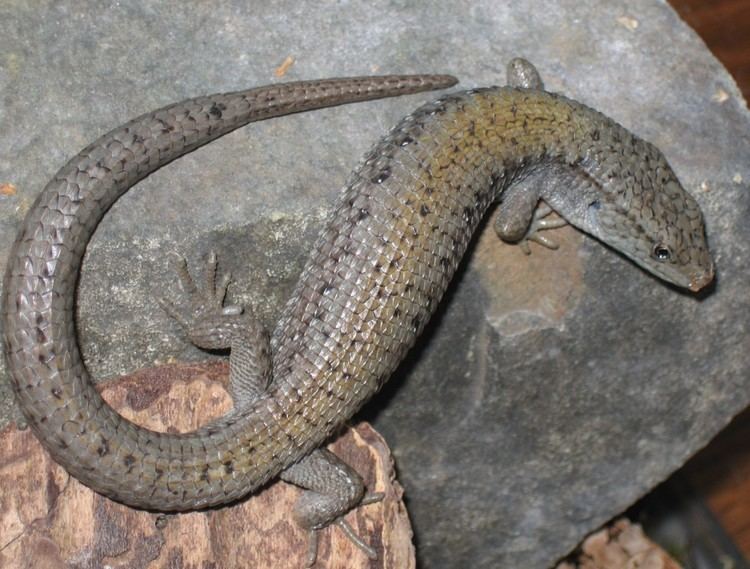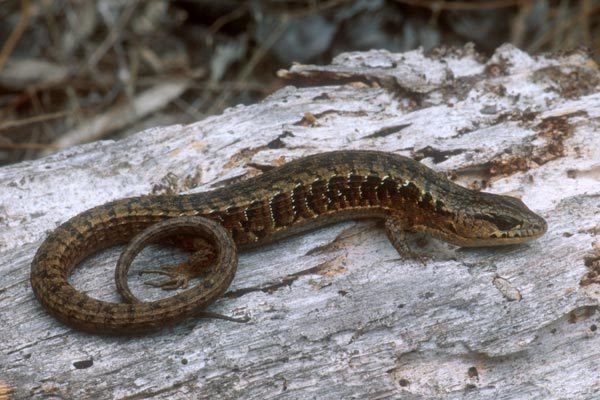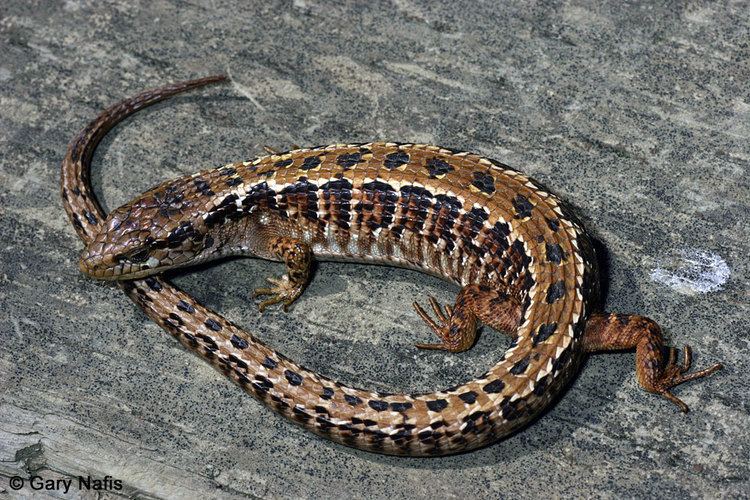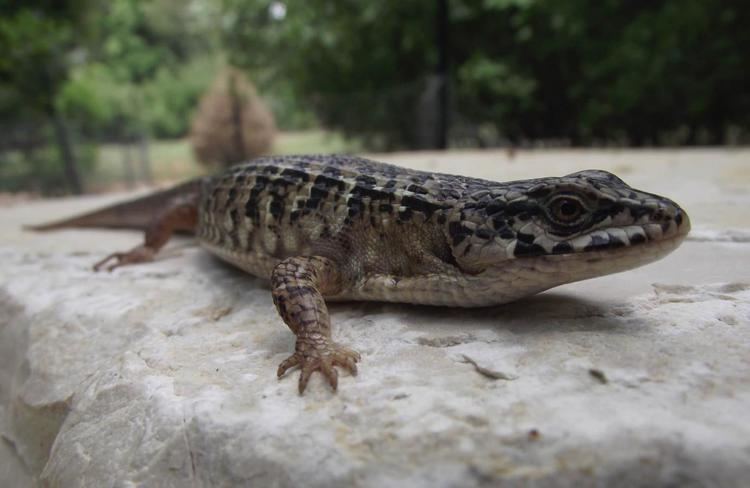Subphylum Vertebrata Suborder Sauria Rank Species | Phylum Chordata Infraorder Anguimorpha Higher classification Elgaria | |
 | ||
Similar Southern alligator lizard, Elgaria, Reptile, Western skink, Scaled reptiles | ||
Northern alligator lizard
The northern alligator lizard (Elgaria coerulea) is a medium-sized lizard that occurs on the North American west coast.
Contents
- Northern alligator lizard
- Taxonomy
- Etymology
- Description
- Reproduction
- Distribution
- In popular culture
- References
Taxonomy

The northern alligator lizard was formerly known by the scientific name of Gerrhonotus coeruleus Wiegmann, 1828, but is nowadays assigned to the genus Elgaria.
Four subspecies are recognized as being valid, including the nominotypical subspecies:


Nota bene: A trinomial authority in parentheses indicates that the subspecies was originally described in a genus other than Elgaria.
The subspecies E. c. principis is one of five species of lizards in Canada.
Etymology
The subspecific name, palmeri, is in honor of American zoologist Theodore Sherman Palmer.
Description

Sierra alligator lizards are medium-sized slender lizards. Adults reach a snout-to-vent length of about 10 cm (3.9 in) and a total length of roughly 27.5 cm (10.8 in). They have a distinct skin fold on their sides, separating the keeled scales on the back from the smooth ventral scales. This skin varies in color, but can be brown and white or greenish yellow and brown. They are brownish in color and often have dark blotches that sometimes blend together into bands. The throat and mouth area of some young individuals can be yellow. The belly is light gray. The eyes are dark. Their typical diet includes crickets, mealworms, and moths, but they will also take larger prey, such as small lizards, and will even eat small baby mice if given the opportunity.
Reproduction

The Northern Alligator Lizard is live-bearing, producing up to 15 young (typically 4–5), between June and September. During the spring breeding season, a male lizard grabs on to the head of a female with his mouth until she is ready to let him mate with her. They can remain attached this way for many hours, almost oblivious to their surroundings. Besides keeping her from running off to mate with another male, this probably shows her how strong and suitable a mate he is.
Distribution
The Northern alligator lizard occurs along the Pacific Coast and in the Rocky Mountains from southern British Columbia through Washington, northern Idaho and western Montana south through Oregon to the coastal range and the Sierra Nevada in central California. As the map shows, the different subspecies have quite different ranges, with E. c. principis being the most widely distributed, whereas the E. c. coerulea subspecies occurs mainly around the San Francisco area but they are also found farther north into Humboldt County.
The species is widely distributed along the Pacific coast and can be found from sea level up to elevation of about 3,350 m (10,990 ft). It is found in a variety of forested habitats and montane chaparral.
In popular culture
The 1972 song "Ventura Highway" by the band America, from their album Homecoming, mentions "alligator lizards in the air". Dewey Bunnell, the song's vocalist and writer, has said that the lyric is a reference to the shapes of clouds in the sky he saw in 1963 while his family was driving down the coast from Vandenberg Air Force Base near Lompoc, California where they had a flat tire. While his father changed the tire, he and his brother stood by the side of the road and watched the clouds and saw a road sign for "Ventura".
